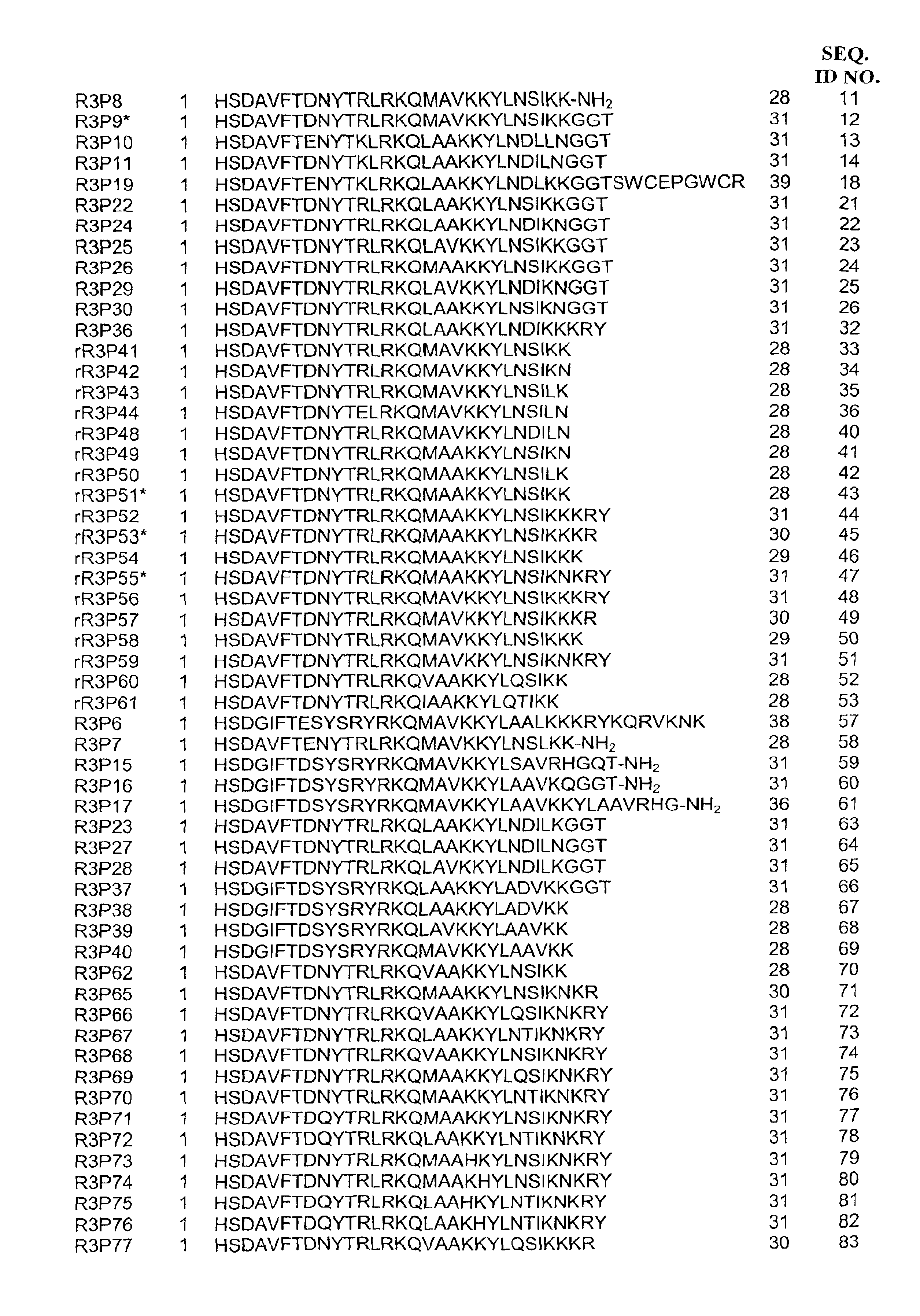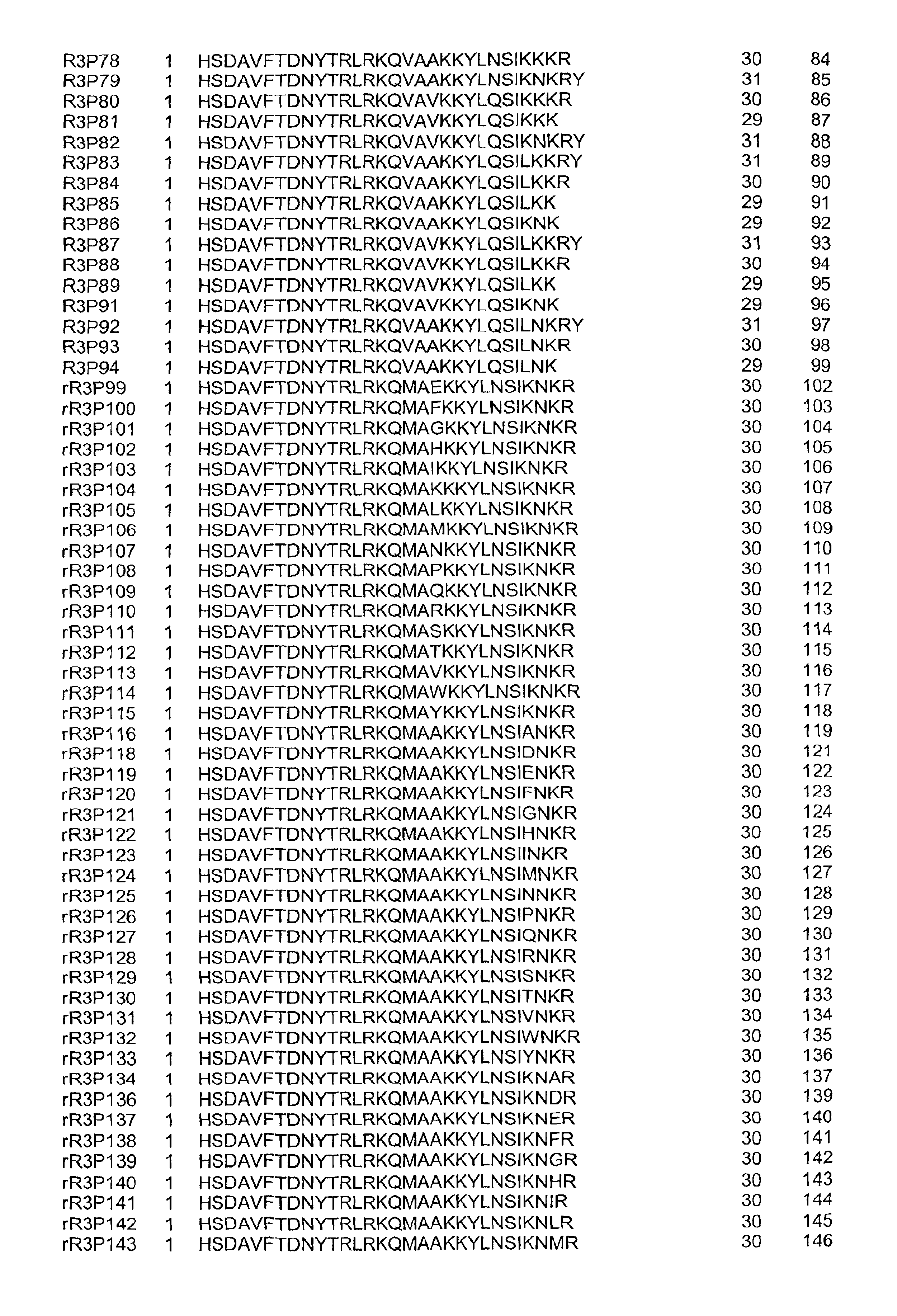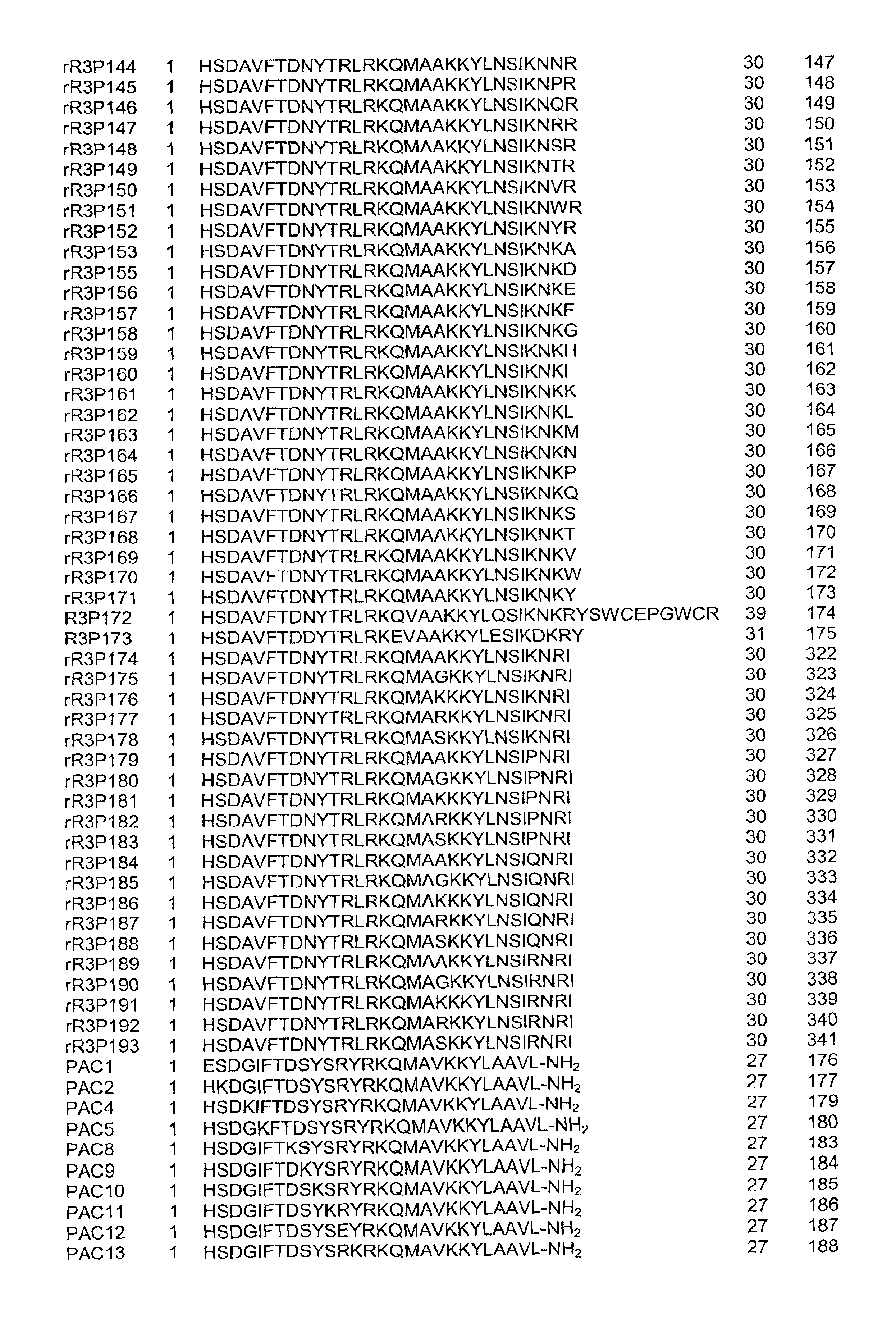Pituitary adenylate cyclase activating peptide (PACAP)receptor 3 (R3) agonists and their pharmacological methods of use
a technology of adenylate cyclase and adenylate cyclase, which is applied in the field of newly identified polypeptides, can solve the problems of gastrointestinal side effects reported in the literature, limitations of sfus, and drug association with liver toxicity, so as to stimulate insulin release, reduce blood glucose in vivo, and improve the effect of potency
- Summary
- Abstract
- Description
- Claims
- Application Information
AI Technical Summary
Benefits of technology
Problems solved by technology
Method used
Image
Examples
example 1
Protocol for Rat Islet Isolation
[0112]Sprague Dawley rats (275-320 g) were used as the source of donor islets. Briefly, the pancreas was filled with 10 ml of cold reconstituted Liberase RI (Boehringer Manheim), harvested and incubated with additional 5 ml enzyme solution in water bath for 30 minutes. Tissue suspension was washed twice with cold 10% FBS / Hanks buffer (Gibco), resuspended in 8 ml 25% ficoll (Sigma) and then layered with 5 ml each of 23%, 20% and 11% ficoll. The islets in the 20% layer after centrifugation were removed, washed twice with cold 10% FBS / Hank buffer and resuspended in 10% FBS / RPMI 1640 media (Sigma).
example 2
Protocol for Assaying Peptide-induced Elevation of Insulin Levels in Rats
[0113]Wistar rats are fasted overnight (17 hrs) and then anesthetized with pentobarbital (0.1 ml / 100 g BW). Glucose (0.4 g / kg dissolved in 1% human albumin-saline)+ / −peptide (dissolved in 1% human albumin-saline) is injected intravenously into the tail vein. The rats are eye-bled 1 minute after the injection and 50-100 ul of the plasma are assayed for insulin level with the Linco RIA kit (Linco Research, Inc., St. Charles, Mo.).
example 3
Protocol for Determining the Effect of Peptides on Intraperitoneal Glucose Tolerance in Rats
[0114]Wistar rats are fasted overnight and then anesthetized with pentobarbital. The rats were eye-bled (zero time) and the peptide (in 1% human albumin) was injected into the tail vein. Five minutes later, 1 g / kg of glucose (in saline) was injected intraperitoneally, and the rats were eye-bled after 15, 30 and 60 minutes. Plasma glucose levels were determined using the Technicon Axon autoanalyzer, Bayer Diagnosics division of Bayer Corporation, Tarrytown N.Y., operated using Method No. SM4-2143F90“Glucose”.
PUM
| Property | Measurement | Unit |
|---|---|---|
| Molar density | aaaaa | aaaaa |
| Molar density | aaaaa | aaaaa |
| Molar density | aaaaa | aaaaa |
Abstract
Description
Claims
Application Information
 Login to View More
Login to View More - R&D
- Intellectual Property
- Life Sciences
- Materials
- Tech Scout
- Unparalleled Data Quality
- Higher Quality Content
- 60% Fewer Hallucinations
Browse by: Latest US Patents, China's latest patents, Technical Efficacy Thesaurus, Application Domain, Technology Topic, Popular Technical Reports.
© 2025 PatSnap. All rights reserved.Legal|Privacy policy|Modern Slavery Act Transparency Statement|Sitemap|About US| Contact US: help@patsnap.com



